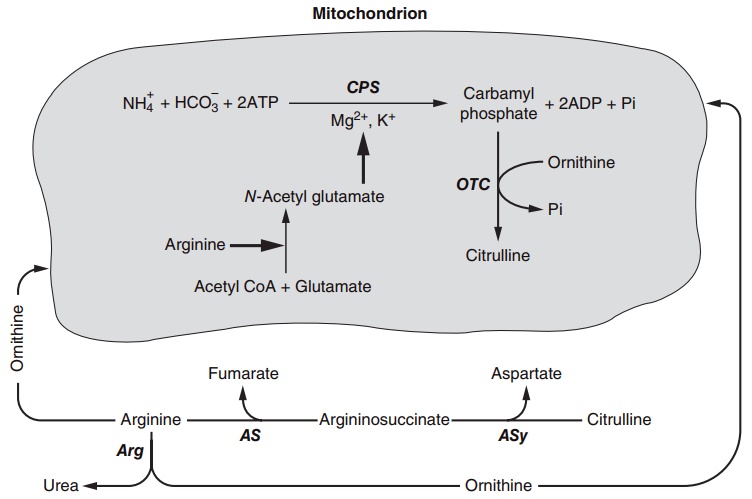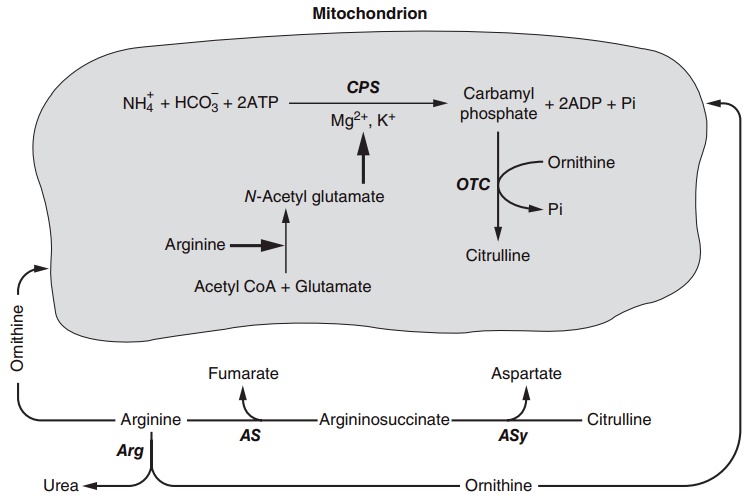Chapter: Introduction to Human Nutrition: Nutrition and Metabolism of Proteins and Amino Acids
Urea cycle enzymes and urea production

Urea cycle enzymes and urea production
Finally, with reference to the major processes shown in Figure 4.5, the urea cycle enzymes, which are dis-tributed both within the mitochondrion and in the cytosol (Figure 4.8), are of importance. The produc-tion of urea may be viewed largely, but not entirely, as a pathway involved in the removal of amino nitro-gen and contributing to an adjustment of nitrogen loss to nitrogen intake under various conditions. The five enzymes of urea biosynthesis associate as a tightly connected metabolic pathway, called a metabalon, for conversion of potentially toxic ammonia as well as removal of excess amino acids via their oxidation with transfer of the nitrogen to arginine and ulti-mately urea. This is especially important when the supply of protein or amino acids is high owing to

Figure 4.8 The urea cycle enzymes and their distribution in the liver. CPS, carbamoyl phosphate synthetase; OTC, ornithine transcarbamylase; Asy, argininosuccinic synthetase; AS, argininosuccinate; Arg, arginase.
variations in the exogenous intake or when there is a high rate of whole body protein breakdown in cata-bolic states, as occurs in severe trauma and following overwhelming infection.
The reutilization of urea nitrogen starts from the hydrolysis of the intact urea molecule. By constantly infusing the [15N2]-urea tracer, the appearance of the singly labeled [15N]-urea should represent the extent of urea hydrolysis. A 24 hour constant infusion of [15N2]-urea revealed a minimal amount of [15N]-urea appearance in the plasma, and a linear relationship over a wide range of protein intake versus total urea production and urea hydrolysis. Furthermore, the possible metabolic pathways involved in the assimila- tion of ammonia generated from urea nitrogen include (1) citrulline synthesis, (2) L-glutamate dehy-drogenase pathway in the mitochondria, and (3) glycine synthase. The net formation of amino nitro-gen from these pathways is quantitatively minimal compared with the metabolic fluxes of these amino acids through their major pathways, such as protein turnover, dietary intake, and de novo synthesis (of the nutritionally dispensable amino acids only).
Related Topics